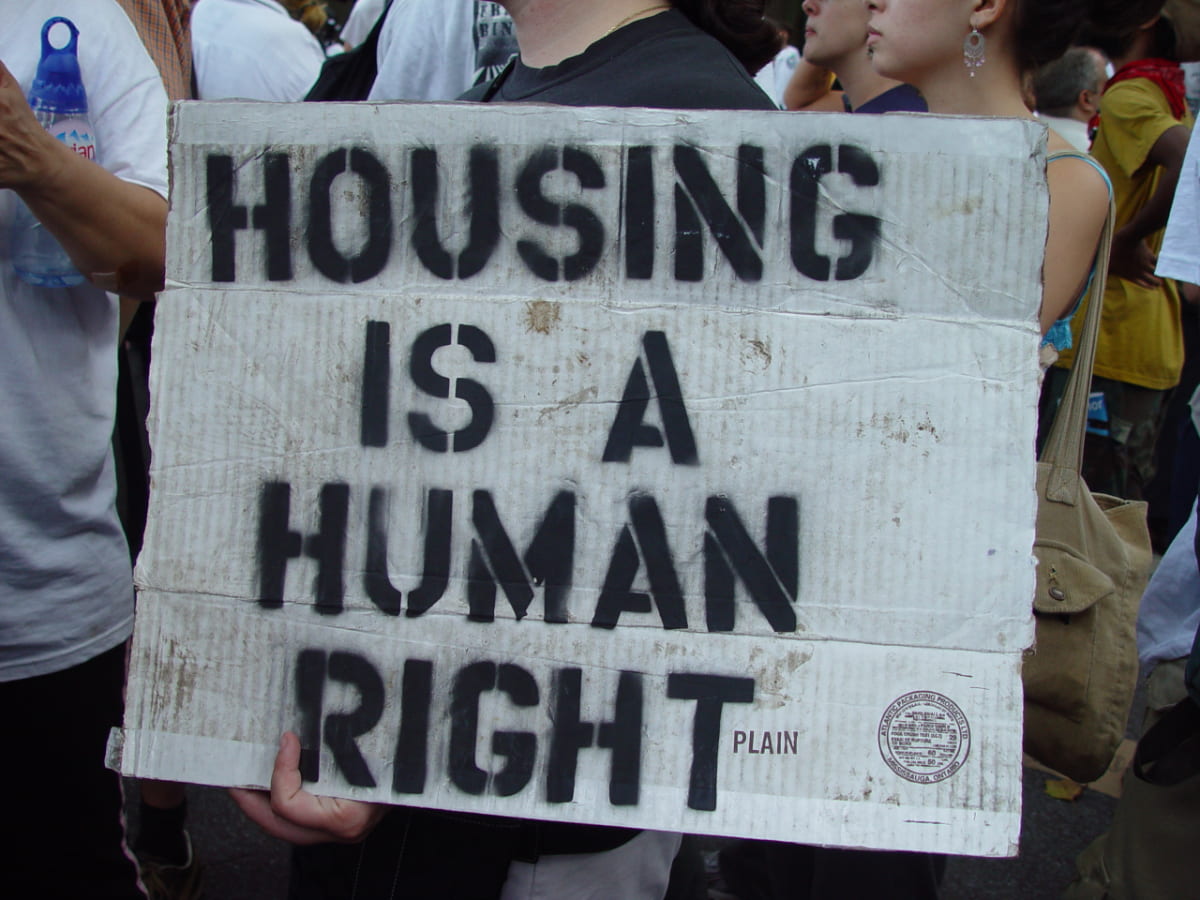by Winnie Shen

With the NYC Mayoral election coming up on June 22, 2021, the next Mayor of NYC has the unenviable task of leading NYC through its COVID recovery. Any recovery plan must include clear steps for how to address housing unaffordability and homelessness. As the pandemic has made evident, housing is healthcare.
Before looking forward at what solutions the next Mayor can adopt, it is necessary to map the housing landscape under Mayor Bill de Blasio and his administration. Mayor de Blasio ran on a platform that featured housing as a top priority and he promised to provide “fundamental change[s] that address the struggle of millions of New Yorkers – policies that take dead aim at this Tale of Two Cities.” (p. 3)
Mayor Bill de Blasio and his administration have made important achievements in the field of housing but have not adopted the bold measures necessary to truly ensure housing for all. Of note, under his administrations, policies such as a Right to Counsel, which guaranteed free legal services for certain tenants facing eviction, an expansion of the Certificate of No Harassment (CONH) program, and the Family Homelessness and Eviction Prevention Supplement (CityFHEPS) rental assistance program, were implemented.
While all three of these achievements are significant, they are not without their faults. Pre-pandemic, Right to Counsel was limited to only certain zip codes and to be eligible, tenants could not earn more than 200% of the national poverty level, or $25,520 for a single adult. The CONH program requires certain landlords to first obtain a CONH permit that proves that they have not harassed any tenants in the five years prior before they can receive a permit to complete major construction. However, the CONH program’s eligibility criteria and the definition of tenant harassment both remain too narrow, making it difficult for tenants to use CONH to defend their rights.
The CityFHEPS program was an effort by the de Blasio administration to consolidate a number of other rental assistance programs. However, the program provides vouchers of insufficient value for many families. The CityFHEPS vouchers are not tied to the Fair Market Rents as decided by the US Housing and Urban Development (HUD). Apart from forcing households of three to find an apartment for less than $1,600 a month, CityFHEPS and other voucher holders are often faced with discrimination as landlords refuse to rent to them.
The Right to a Roof report released by the Association for Neighborhood & Housing Development along with other housing policy and housing rights groups highlighted the importance of creating an integrated housing plan. As it currently stands, there are 11 city agencies and mayoral offices that do work related to housing, such as the NYC Commission of Civil Rights that investigates income discrimination, the Department of Social Services that administers benefits including CityFHEPS, and Housing Preservation and Development that oversees the CONH program.
For a family who may be attempting to secure safe housing, while also trying to hold their former landlord accountable for failure to maintain services, they will have to interact with many different bureaucracies simultaneously. It is exhausting for a family going through a crisis to also devote the time needed to keep the government accountable to their needs. An integrated housing plan, whether led by a new Deputy Mayor or other offices, will ensure government agencies are working in tandem and in the best interests of New Yorkers.
However, at the foundation of the housing crisis is a need for more affordable housing. New York has attempted to generate more housing by providing tax breaks to developers through programs such as 421-a, which cost the city $1.6 billion in foregone tax revenue in 2019. While ending 421-a would require coordination with the State government, it is an area that the Mayor would be able to exert considerable influence, as Mayor de Blasio demonstrated in 2015 when his recommendations were largely adopted by the state legislature.
Another possible source of revenue for the city is the civil penalties imposed on landlords that are not collected. A 2018 New York Times investigation looked into 126 housing violation cases and discovered that the city chose not to collect on $4.7 million in civil penalties that it could have. For a cash-strapped city, this signals an opportunity to be less lenient with landlords who are in violation of housing code.
While solving the city’s housing and homelessness crisis may seem to be an insurmountable task, the city can look to itself for a successful case study. The city was able to reduce the rate of veteran homelessness by an astonishing 98%. The success of that endeavor is largely credited to access to federal funding provided, which was spared from cuts under the Trump administration. However, the actual measures that the Department of Veterans’ Services (DVS) implemented were vital in reducing the rate of homelessness among veterans. These included a mentorship program that paired homeless veterans with a mentor to help them navigate the house-hunting process, a consolidated resource center that allowed veterans to secure help with a multitude of issues (not just housing-related), and increased access to rental subsidies.
If the city hopes to address its housing crisis, it should look towards scaling the efforts of the DVS by ensuring any housing insecure New Yorker is able to access the resources they need in one spot, provide easy access to rental subsidies that are high enough in value to secure an apartment, as well as ensure there is sufficient code enforcement in place to prevent landlords from engaging in negligent and harassing behavior.
Cover Image Source: Filter Magazine